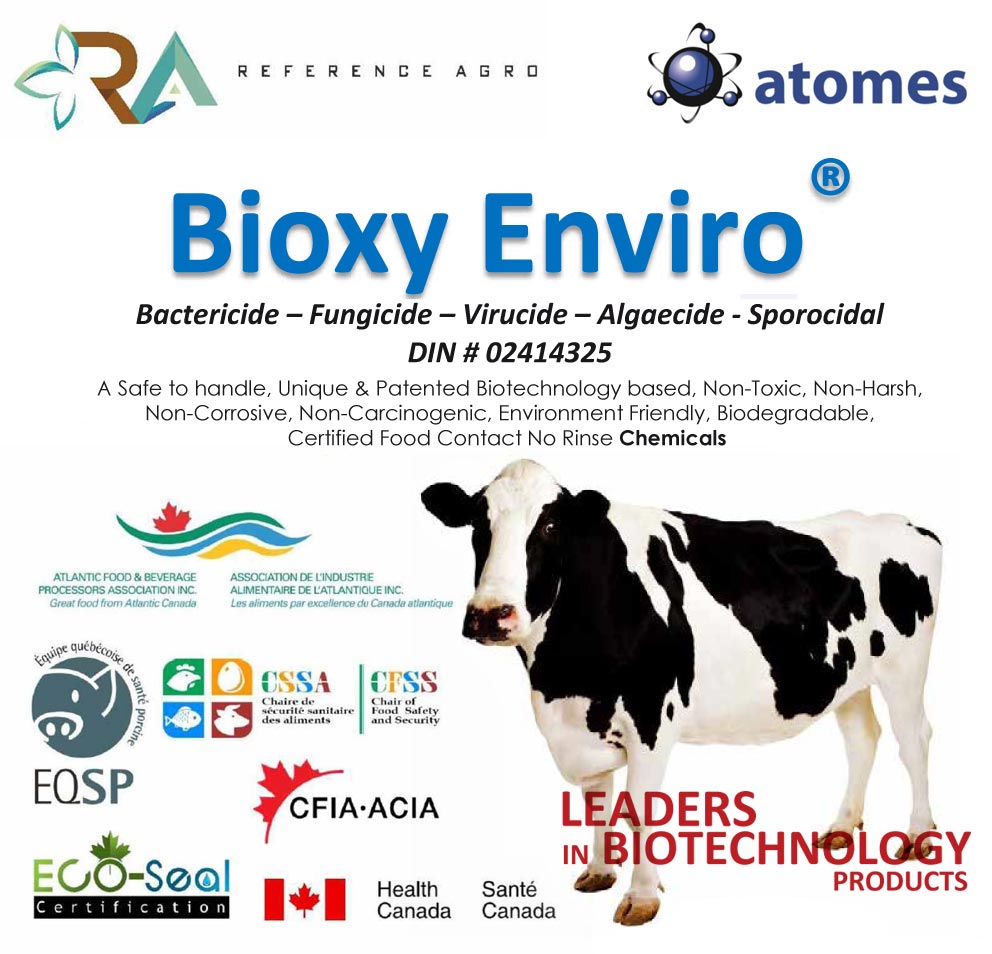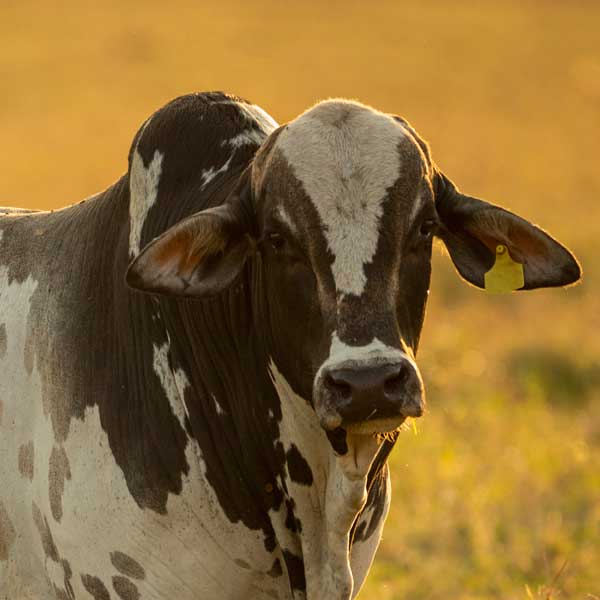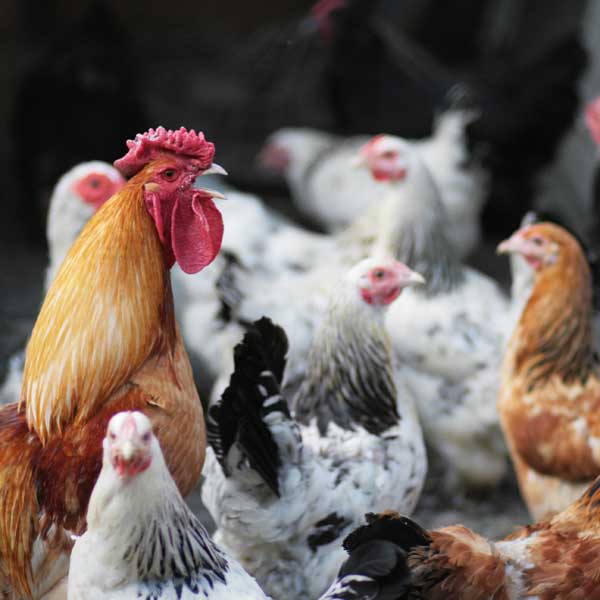
BIOXY ENVIRO FARM
WIDE SPECTRUM STERILIZER
General Features
Quaternary, Hydrogen Peroxide and Neutral Peracetic-Acid is the first, environmentally safe, broad spectrum sterilant, setting new industry standards with a record of total kill on the hardest-to-fight endospores.
Bioxy Enviro® is powder, when dissolved in water it forms three active disinfectants at neutral pH making it safe for users; Peroxy-acetic agent, hydrogen peroxide and two quaternary chains of the fourth generation.
Bioxy Enviro® is used in hundreds of applications in the agricultural sector such as evaporation, footbath , cleaning and general disinfection. The powder degrades quickly and leaves no residue in the environment, in addition, there is no microbial resistance.
Bioxy Enviro® is a champion against a broad spectrum of microorganisms. It is also safe and effective in the presence of biofilm, dirt and other debris.
With its environmentally friendly and safe formula, Bioxy Enviro® can replace glutaraldehyde, aldehyde and chlorine-based toxic and corrosive products.
Bioxy Enviro® can be used in cattle, swine and poultry farms and in many places such as veterinary clinics. It is virtually odorless making this app non-irritating to users and pets alike.
Features & Benefits
|
|
Usage Instruction
SANITATION
Use Bioxy Enviro® at a maximum concentration of 0.5%. (5g of Bioxy Enviro® per 1 liter of water). This 0.5% concentration creates up to 500 ppm of active peracetic acid.
DISINFECTION
Use Bioxy Enviro® at 1% concentration (10g of Bioxy Enviro® per 1 Liter of water). Let this solution contact surfaces for at least 10 minutes. No need to rinse.
INSTRUCTIONS
- Determine the amount of disinfectant to be used.
- Select the level of disinfection needed.
- Pour the right amount of Bioxy Enviro® into warm water.
- Bioxy Enviro® is a green product, PAA is active for 3 days.
*Quaternary Ammonium is active for 4-5 days.
Applications
SURFACE DISINFECTION
In all agricultural buildings - Remove all animals from the facility. Remove manure and sawdust from equipment and barn floors, walls and other surfaces. Scrub the fan, motor, ventilation and electrical equipment and use compressed air. Wet all surfaces using a 1% Bioxy Enviro® solution with a pressure cleaner or steamer for final cleaning and disinfection.
Depending on the pathogen to be eliminated, Bioxy Enviro® should remain in contact with the surface for at least 10 minutes. Brush heavily soiled materials and soak in 1% Bioxy Enviro® solution.
In veterinary hospitals – Remove solid deposits, then wet the surfaces with a 1% Bioxy Enviro® solution for disinfection, using a mop, sponge, cloth or spray. A minimum contact time of 10 minutes is required. For laboratory equipment and containers, brush heavily soiled materials and soak in 1% Bioxy Enviro® solution for 10 minutes.
In slaughterhouses and food processing plants – Remove all deposits from surfaces. Then, wet the surfaces with 1% Bioxy Enviro® solution for disinfection, using a mop, sponge, cloth or spray. A minimum contact time of 10 minutes is required. Clean food contact surfaces with drinking water after using Bioxy Enviro®.
INSTRUCTIONS
- Surface disinfection using 10 grams of Bioxy Enviro® per liter of water
- Solution Ratio 1:100
- Apply using pressurized water, steam machine, mop, sponge and spray.
AIR DISINFECTION
For an alternative to hazardous and ineffective glutaraldehyde fumigation, turn off the ventilation system inside empty farm buildings and veterinary hospitals during disinfection.
Use steam equipment as part of final disinfection with a 1% solution of Bioxy Enviro® . Apply one liter of solution per 100 m3 with particles no larger than 100 microns to ensure a minimum contact time of 10 minutes with airborne micro-organisms. Leave the room while steaming.
After the steam has disappeared, users and animals can re-enter the treated area. There is no need to rinse after the procedure.
At 0.5% usage, steaming can be done even when the animals are inside.
INSTRUCTIONS
- Air disinfection with 10 grams per 1 liter of water using Bioxy Enviro® .
- Solution Ratio 1%
- Apply using a steam machine or pulverizer.
- 1 liter is used for 100 m3 area in 100 microns.
Water Network
DISINFECTION
For final cleaning, use 1% Bioxy Enviro® solution for disinfection of the drinking water system. After dosing in the radiator water tank, drain the system. Wait 15 - 30 minutes before draining and rinsing.
SANITATION
For final cleaning, use 0.2% Bioxy Enviro® solution for disinfection of the drinking water system. After dosing in the radiator water tank, drain the system. Wait 15 - 30 minutes before draining.
There is no need to rinse at 200 ppm as the product is Food Contact Certified No Rinse.
INSTRUCTIONS(Water Network Disinfection)
- Disinfection of drinking water mains with 10 grams per 1 liter of water using Bioxy Enviro®.
- Solution Ratio 1%
*sanitation with 0.5% solution without rinsing
*continuous sanitation with 0.1% solution
10 MINUTES KILLING STUDY
| VIRUS | SOLUTION RATIO | MICRO-ORGANISM NAME | SOLUTION RATIO | |||
| Adenovirus Pneumonia | 1 in 100 parts | Rift Valley fever | 1 in 500 parts | |||
| African Horse Sickness Virus | 1 in 200 parts | Simian Virus (SV40 Virus) | 1 in 100 parts | |||
| African Swine Fever Virus | 1 in 100 parts | Swine Influenza Virus | 1 in 100 parts | |||
| Avian Influenza Virus H7N1 – H5N1 | 1 in 400 parts | Swine Vesicular Disease Virus | 1 in 100 parts | |||
| Avian Laryngotracheitis Viruses | 1 in 100 parts | Transmissible Gastroenteritis Virus (TGE) | 1 in 100 parts | |||
| Avian reovirus | 1 in 150 parts | Turkey Herpes Virus | 1 in 100 parts | |||
| Bovine Adenoviruses Type 4 | 1 in 250 parts | Turkey Rhinotracheitis Virus | 1 in 250 parts | |||
| Bovine Polyoma Virus | 1 in 100 parts | TRT | 1 in 250 parts | |||
| Bovine Pseudocopox Virus | 1 in 500 parts | Vesicular Stomatitis | 1 in 500 parts | |||
| Bovine Viral Diarrrhea Virus. | 1 in 500 parts | BACTERIA | SOLUTION RATIO | |||
| Calf Rotavirus | 1 in 100 parts | Actinobacillus pleuropneumoniae | 1 in 250 parts | |||
| Canine Adenovirus (Canine Hepatitis) | 1 in 250 parts | Bordetella avium | 1 in 150 parts | |||
| Canine Coronavirus | 1 in 100 parts | Bordetella bronchiseptica | 1 in 200 parts | |||
| Canine Parainfluenza Virus | 1 in 100 parts | Bacillus Amyloliquefaciens cereus | 1 in 150 parts | |||
| Canine Parvovirus | 1 in 100 parts | Brucella abortus | 1 in 150 parts | |||
| Chicken Anemia Virus | 1 in 250 parts | Campylobacter jejuni | 1 in 150 parts | |||
| Cholera | 1 in 100 parts | Campylobacter Coli | 1 in 150 parts | |||
| Coital Exantherma Virus | 1 in 100 parts | Campylobacter Pyloridis | 1 in 150 parts | |||
| Distemper Virus | 1 in 100 parts | Campylobacter Psittaci | 1 in 150 parts | |||
| Duck Adenovirus | 1 in 100 parts | Clostridium perfringens | 1 in 150 parts | |||
| Duck Enteritis Virus | 1 in 750 parts | Dermatophilus congolensis | 1 in 150 parts | |||
| Egg Drop Syndrome Adenovirus | 11 in 200 parts | Enterobacter Cloacae | 1 in 250 parts | |||
| Equine Arteritis Virus | 1 in 500 parts | Escherichia coli | 1 in 150 parts | |||
| Equine Contagious Abortion Virus | 1 in 500 parts | Klebsiella pneumonia | 1 in 250 parts | |||
| Equine Herpes Virus (Type 1) | 1 in 250 parts | Klebsiella Oxytoca | 1 in 150 parts | |||
| Equine Herpes Virus (Type 3) | 1 in 200 parts | Listeria Monocytogenes | 1 in 150 parts | |||
| Equine Infectious Anemia Virus | 1 in 500 parts | Mycoplasma gallisepticum | 1 in 150 parts | |||
| (Swamp Fever) | 1 in 100 parts | Mycoplasma hyopneumoniae | 1 in 1000 parts | |||
| Equine Influenza Virus (Type A) | 1 in 100 parts | Moraxella bovis (Pink Eye) | 1 in 150 parts | |||
| Equine Influenza Virus (The Cough) | 1 in 100 parts | Mycoplasma gallisepticum | 1 in 150 parts | |||
| Equine Papillomatosis Virus | 1 in 100 parts | Mycoplasma hyopneumonia | 1 in 150 parts | |||
| Feline Calicivirus | 1 in 100 parts | Mycoplasma mycoides | 1 in 250 parts | |||
| Feline Herpes Virus | 1 in 200 parts | Pasteurella multocida | 1 in 200 parts | |||
| Feline Infectious Peritonitis Virus | 1 in 100 parts | Pseudomonas aeruginosa | 1 in 150 parts | |||
| Feline Panleukopenia Virus | 1 in 250 parts | Pseudomonas vulgaris | 1 in 150 parts | |||
| Feline Parvovirus | 1 in 100 parts | Salmonella enterica | 1 in 150 parts | |||
| FMD | 1 in 100 parts | Salmonella typhimurium | 1 in 250 parts | |||
| Feline Rhinotracheitis Virus | 1 in 100 parts | Shigella sonnei | 1 in 150 parts | |||
| Foot and Mouth Disease Virus | 1 in 100 parts | Staphylococcus aureus | 1 in 150 parts | |||
| Fowl pox | 1 in 150 parts | Staphylococcus epidermidis | 1 in 150 parts | |||
| Helicobacter pylori | 1 in 100 parts | Streptococcus equi (Strangles) | 1 in 150 parts | |||
| Hog Cholera Virus | 1 in 100 parts | Streptococcus pyogenes | 1 in 150 parts | |||
| Infectious Bronchitis Virus | 1 in 150 parts | Streptococcus suis | 1 in 150 parts | |||
| Infectious Bursal Disease Virus | 1 in 300 parts | Taylorella equigenitalis | 1 in 500 parts | |||
| Infectious Canine Hepatitis Virus | 1 in 200 parts | Treponema hyodysenteriae | 1 in 150 parts | |||
| Infective Bovine Rhinotracheitis Virus | 1 in 200 parts | FUNGUS | SOLUTION RATIO | |||
| Infectious laryngotracheitis (ILT) | 1 in 150 parts | Aspergillus fumigatus | 1 in 150 parts | |||
| Leptospira Canicola Virus | 1 in 100 parts | Aspergillus niger | 1 in 150 parts | |||
| Lassa Fever | 1 in 100 parts | Candida albicans | 1 in 150 parts | |||
| Maedi-Visna Virus | 1 in 100 parts | Fusarium moniliforme | 1 in 150 parts | |||
| Marek’s Disease Virus | 1 in 250 parts | Microsporum canis | 1 in 300 parts | |||
| Mouse Parvovirus | 1 in 100 parts | Malassezia pachydermatis | 1 in 150 parts | |||
| Myeloid leucosis | 1 in 200 parts | Trichophyton mentagrophytes | 1 in 300 parts | |||
| Newcastle Disease Virus | 1 in 300 parts | Trichophyton spp. (Mud Fever) | 1 in 300 parts | |||
| PCVS Virus (PMWS) | 1 in 100 parts | Trichophyton spp. (Ringworm) | 1 in 300 parts | |||
| Porcine Parvovirus | 1 in 100 parts | |||||
| Porcine Reproductive and Respiratory | 1 in 100 parts | |||||
| Poultry Enteritis (PEMS) | 1 in 100 parts | |||||
| Syndrome Virus (PRRS) | 1 in 100 parts | |||||
| Pseudorabies Virus (Aujesky’s Disease) | 1 in 100 parts | |||||
| Rabies | 1 in 100 parts | |||||
| Rotaviral Diarrhea Virus | 1 in 100 parts | |||||




